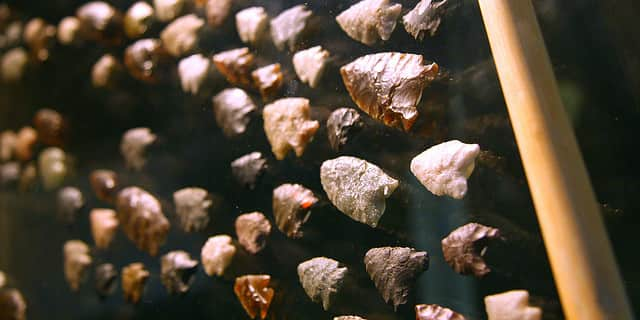The Evolution of the Arrow: The First Arrows
Benjamin T. Lambright 06.15.11

Part 1: Sticking it to em’
The bow and arrow are two of the oldest and most effective hunting tools. The heart of the effectiveness of these weapons has always rested in the precision craftsmanship that goes into the arrow itself.
The history of the arrow beings with simple wooden darts and while primitive, sharpened-bone arrow heads have been dated back as far 60,000 years ago, the simple single piece, wooden arrow may go back farther than any known historical record.
The first arrows were the perfect weapon for early hunters. They literally grew on trees and could be honed into effective weapons with relatively few man hours and the most basic of tools; they were easier to use than other projectile weapons, not to mention lighter and more plentiful than spears.
However, there are significant drawbacks to the wooden arrow. First, without fletching the arrow’s flight could still be unpredictable over long distances and, after a strike, a wooden arrow was almost guaranteed to break or at the very least become too blunt or bent, rendering it no longer useful. Also, the small puncture wound left by these arrows would have produce a significantly smaller blood trail and thus make wounded game more difficult to track.
These early arrows were produced in a variety of ways. While wet or green wood could have been used, the majority of arrows were first dried to make them lighter and easier to sharpen. The most primitive arrow would simply have been a long straight stick, broken to a sharp point and notched at one end to accommodate the bowstring. From there, early man would have carefully honed arrows to a point rubbing them on flat rocks. However, the most effective wooden arrows were made by early flint tools.
In the hands of someone skilled at the process, flint can be broken at angles which produce sharp edges comparable to those of modern scalpels. Those same edges were used carve arrow-points, that could penetrate the tough hides of larger game and, with a good bow, strike with enough force to break through cranial bones of other game.
From a technological standpoint, the straight-shaft wooden arrow was a revolution for early man. Using flint sharpening tools a wooden shaft could be sharpened to a near surgical point and weighing as little as a few ounces could be propelled at high speeds with a fraction of the effort it would have taken to achieve the same kill with a spear. This conservation of effort allowed for more hunting and more hunting meant more food. And, for early man: He who has the most food lives the longest.

